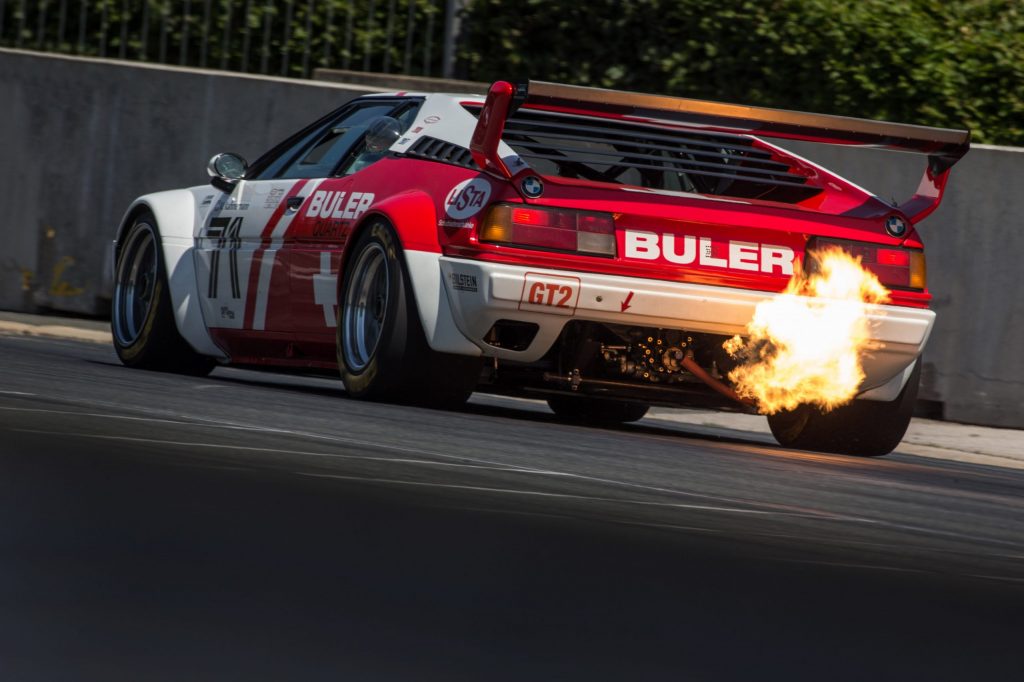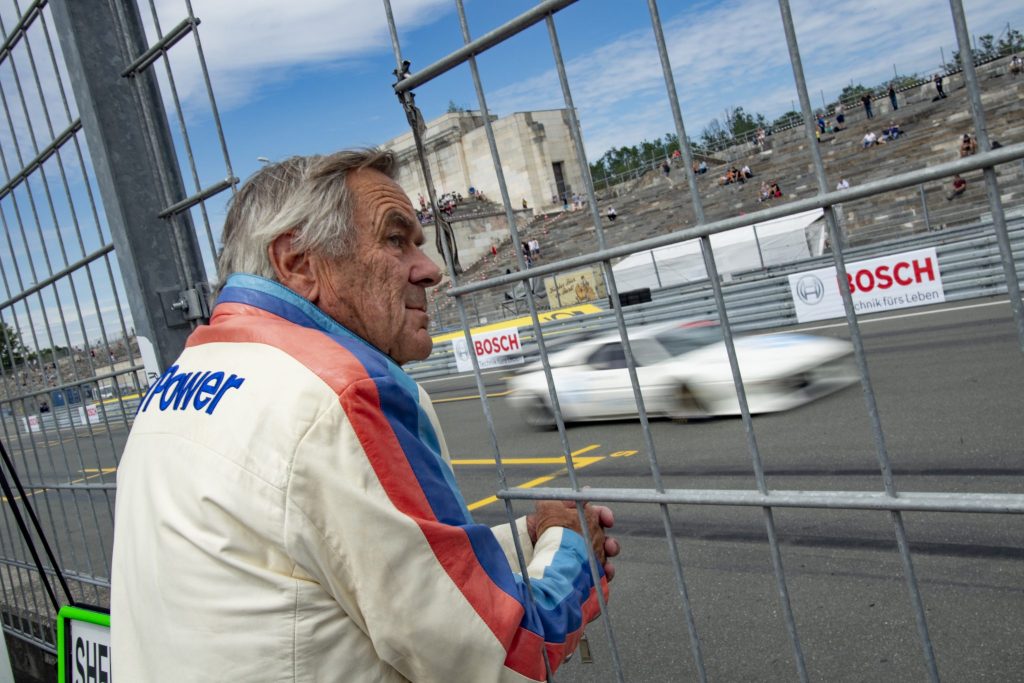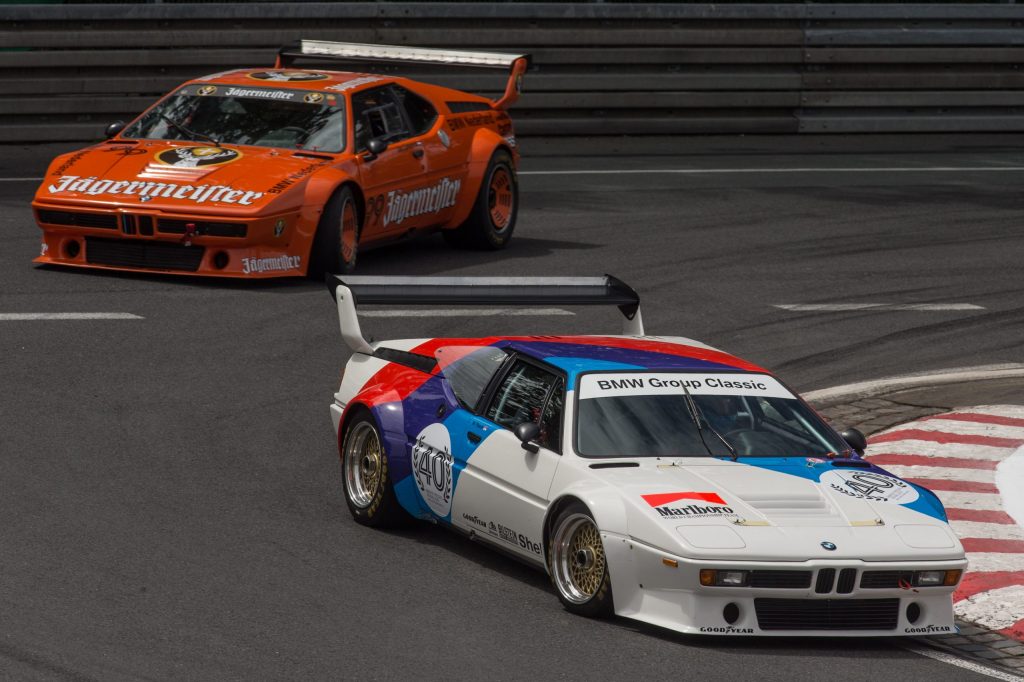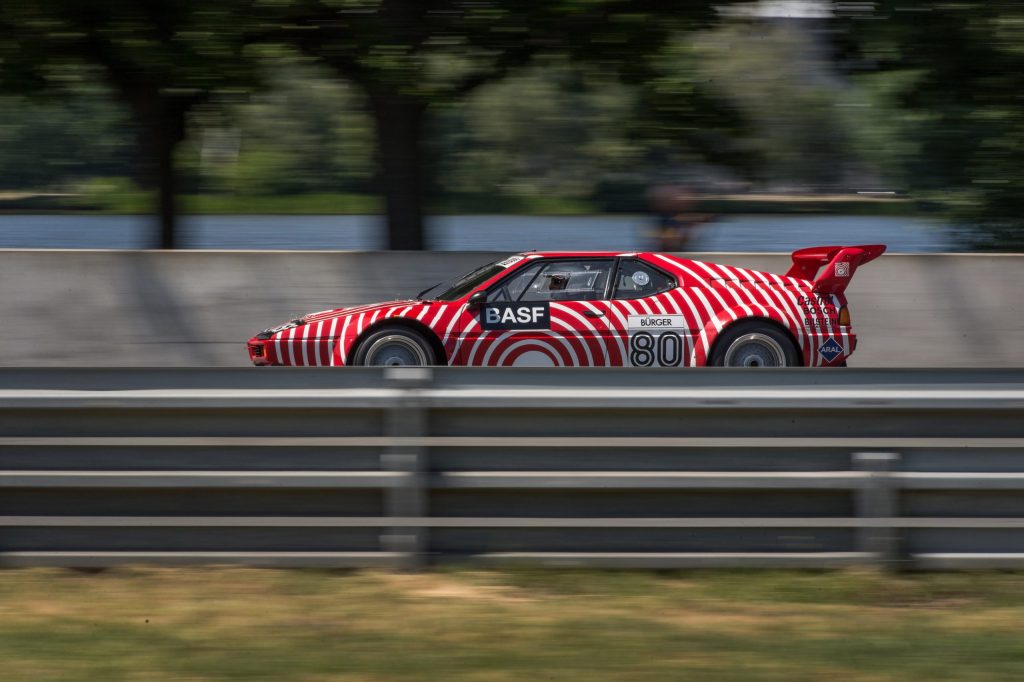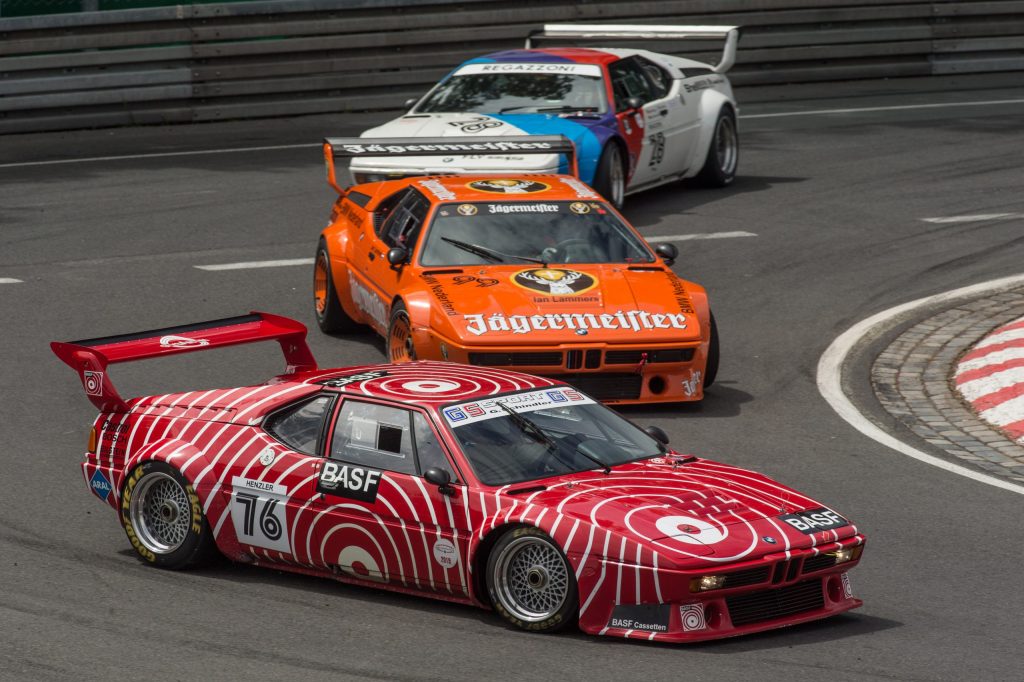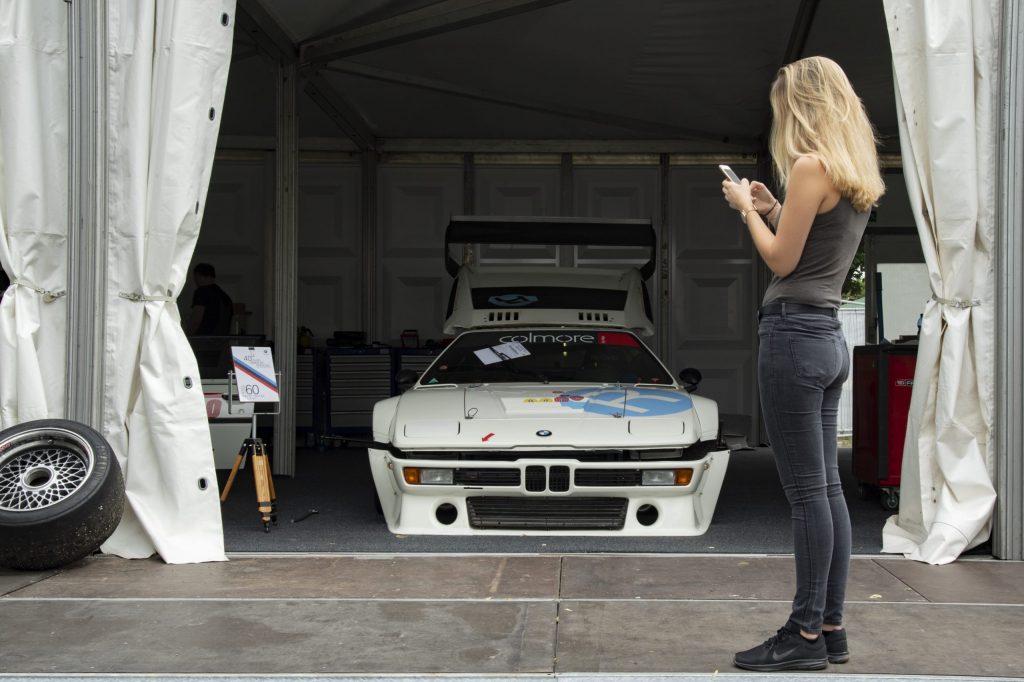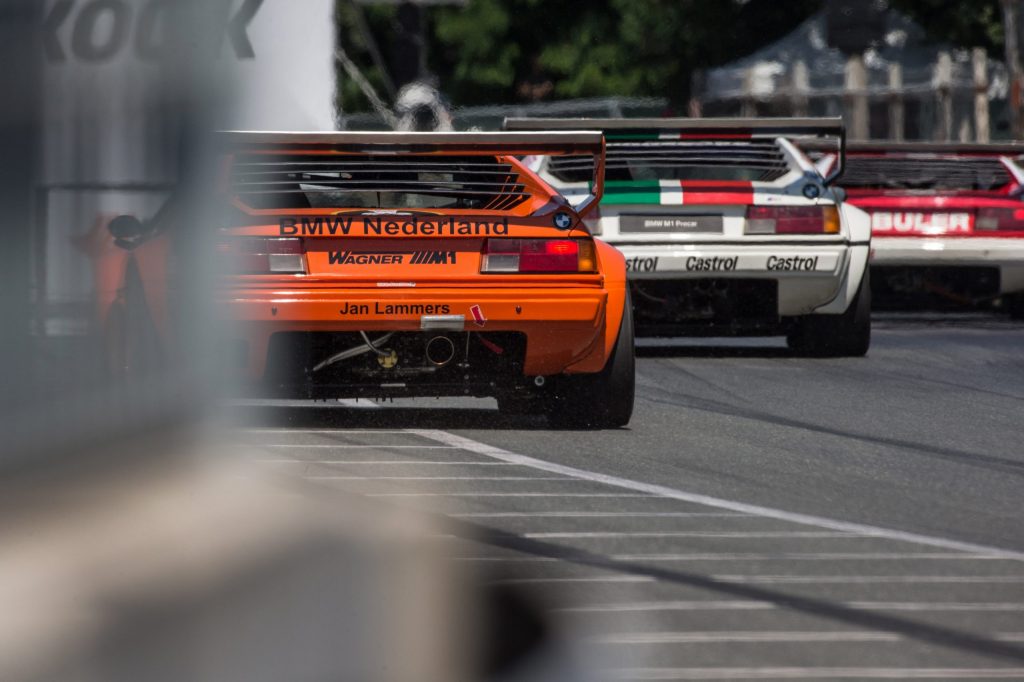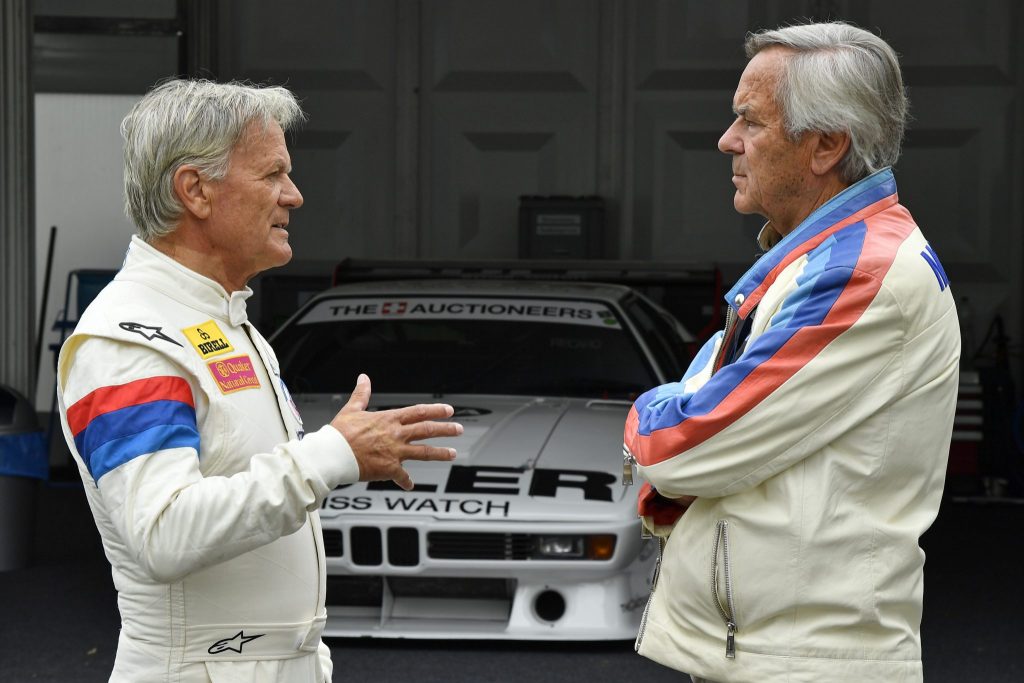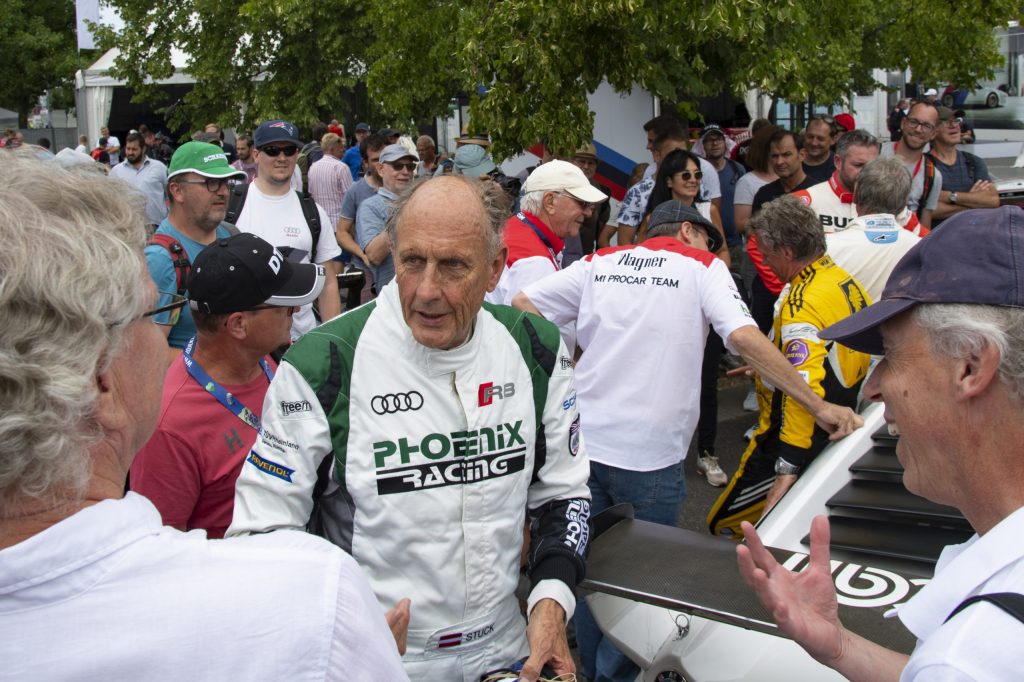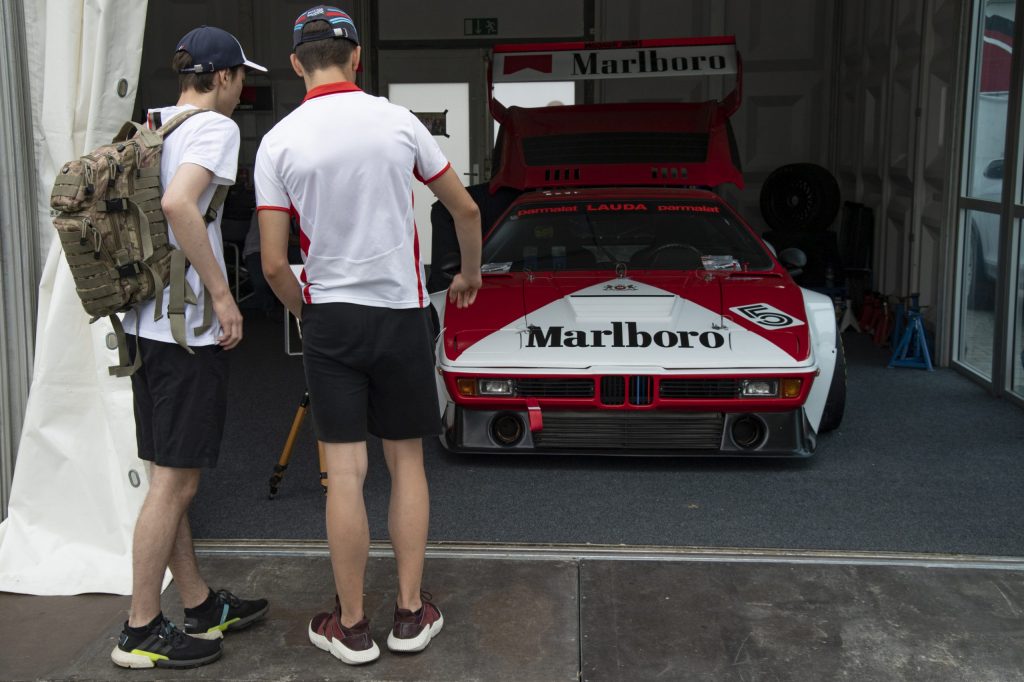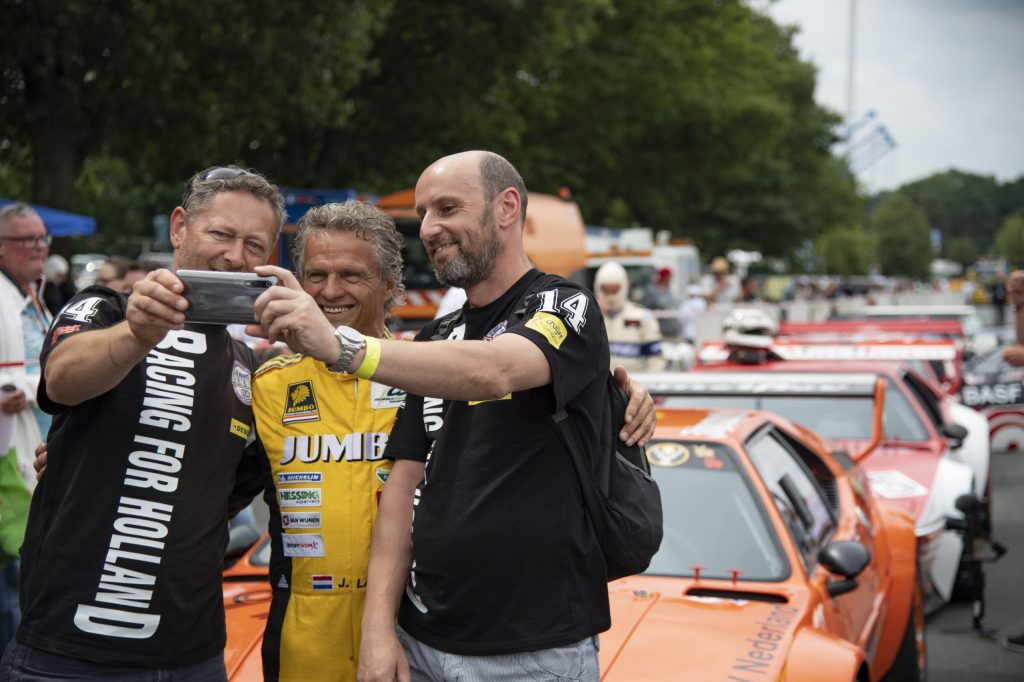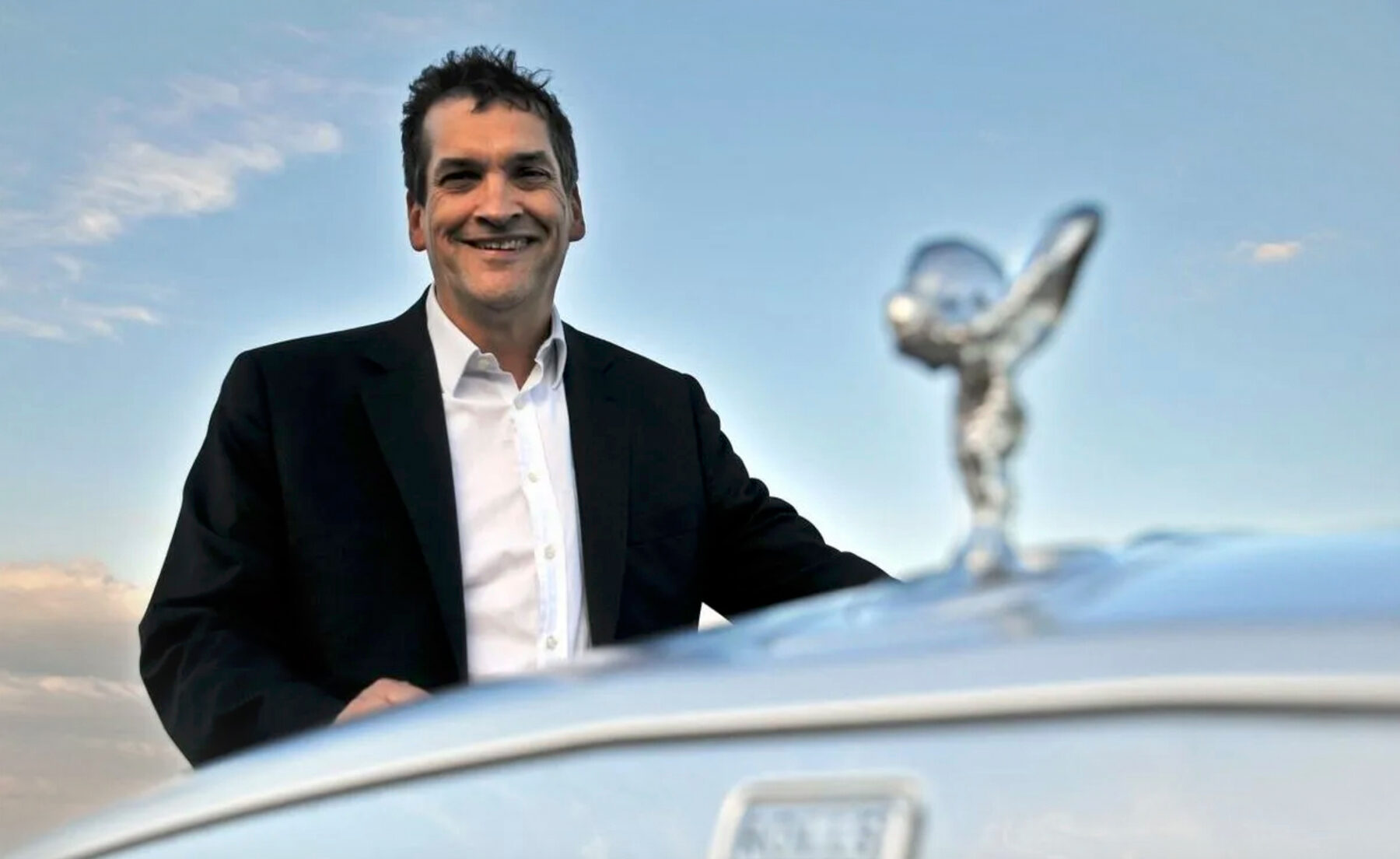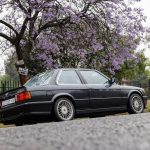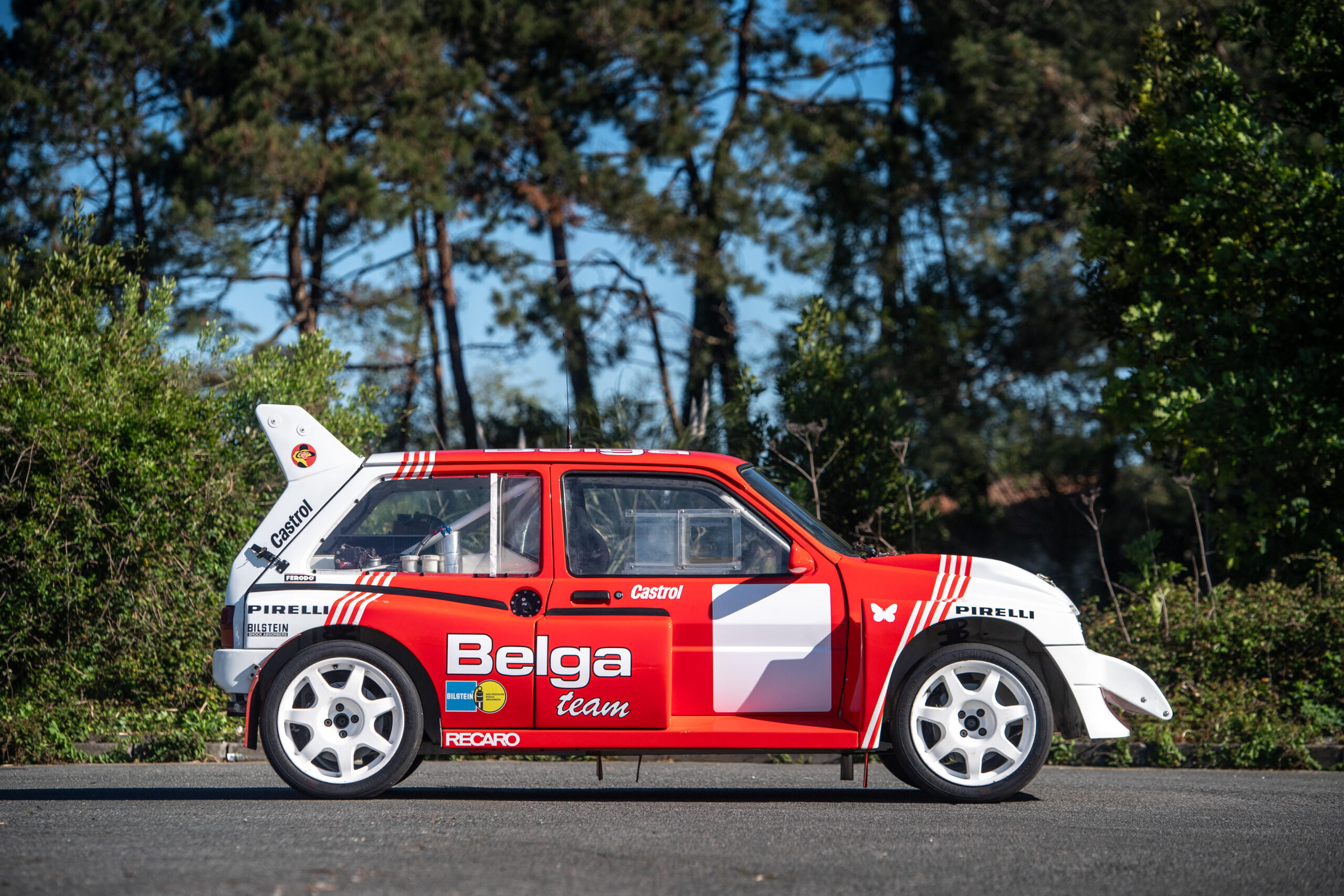At a nondescript bar in downtown Munich, sometime in 1978, a handful of car company executives gathered at a corner table and spoke in hushed tones. They knew only too well that here, in the home city of BMW, walls have ears – and the executives were trying to dig their way out of a hole almost as deep as the famous BMW four-cylinder high-rise headquarters was tall.
Steering the conversation, and fuelled by several beers and one whisky too many, was Jochen Neerpasch, founding father and head of BMW M GmbH. Sat next to him, leaning in and listening intently, was Max Mosley.
Neerpasch had a problem. He had convinced the board at BMW that he should take the company into Group 4 and Group 5 sports car racing with a new, mid-engine car that would bring both silverware and cash to M GmbH. However, not long after securing approval for his plan, the FIA changed the homologation rules and Neerpasch found himself scrambling to keep the project on track. Neerpasch and his colleagues struck upon the idea of a one-make racing championship for BMW’s troubled M1 sports car.
The group turned to Mosley, drew a collective deep breath, and asked, “What do you think?”
Mosley’s buy-in was vital. As legal advisor to the Formula 1 Constructors Association, he had the ear of Bernie Ecclestone.
“Leave it with me,” said Mosley.
Why the M1 nearly missed the grid
Neerpasch is recounting the origins of the M1 Procar Championship, speaking with me at the M1 Procar Revival last summer. He is one of the guests of honour at the event, held at Germany’s Norisring to mark the M1’s 40th anniversary and, consequently, to celebrate the M1 Procar Championship. Even though it only ran in 1979 and ’80, it is often regarded as the coolest one-make race series ever to burn rubber.
Now comfortably into retirement, Neerpasch is happy to tell the world what went on behind the scenes of the M1 project. He is aging well, with a trim figure and tanned skin that suggest retirement isn’t treating him too badly. He takes me back to the period just before he, Max Mosley, and others have the “eureka” moment in the bar.

“When we started on the construction of the M1, the production lines at BMW were not flexible enough that we could build the cars at BMW. So we had to look for an outside partner. We found Lamborghini, and at that time the Lamborghini factory was ideal for this; they had a production volume of 700 to 800 cars a year but they were building only 200 or so.
“So it was perfect for us. The idea was to build 400 cars through the year to get the homologation in Group 4. But after they made the first five or six prototypes, we found out that Lamborghini was in financial trouble.”
A classic red flag alerted Neerpasch of the project’s precarious position: Suppliers were not being paid. Once word reached him in 1978, Neerpasch and his colleagues at M GmbH scrambled to secure a lifeline for the M1 sports car project and their motor racing aspirations for it. “The project nearly collapsed,” Neerpasch recalls.
New partners were necessary. Initially, the plan involved BMW hand-building the powertrain, Dallara making the tubular steel spaceframe, Giugiaro delivering the bodywork, and Lamborghini handling final assembly. Instead, Italina Resina made the bodies and Marchesi the chassis. Then Italdesign introduced the interior before the whole lot was shipped from Italy to Germany where Baur oversaw the final assembly.
The inevitable delays introduced by such fundamental manufacturing changes meant that there was no hope of building enough M1s to homologate it for Group 4 racing in 1979. Which is how Neerpasch ended up scratching his head in the bar in Munich, shoulder to shoulder with Mosley and pondering what on earth he could do to sell enough cars to pacify the board and keep the brand’s motor racing ambitions alive. The two men knew each other well through BMW’s partnership with March Engineering, the team Mosley headed up in Formula 2.
“The next morning,” says Neerpasch, “Mosley contacted Bernie Ecclestone and he thought it was a good idea for Formula 1, to pull in more crowds on Saturdays. It worked, because Bernie got double the normal number of spectators. And as a brand-building exercise for BMW M it was tremendous.”
At that time, F1 was not what it is today. Drivers were not exclusively contracted to Formula 1; they could drive other cars in other series as well. “A few years earlier, in 1974, during the European Saloon Car Championship, we had 13 Formula One drivers driving saloon cars,” Neerpasch says. “Even so, we didn’t really know if all the F1 drivers would accept to drive the cars. At the first race, at Zolder, Mario Andretti said, ‘I will never drive in Procar’ … and then Bernie came with a few dollars, and Mario said, ‘Okay, I’ll drive.’ After that, the others followed!”
Neerpasch recounts how seriously the drivers took the business of extracting the best out of the mid-engined, 470bhp car. The M1 Procar series was the highest level of any single-make championship based around a road-going car, and allowed the F1 boys to strut their stuff.
“They were not paid to take part but there was some prize money and the winner of the championship would get an M1 road car,” Neerpasch says. “[Niki] Lauda and [Nelson] Piquet won the cars but I don’t know whether Lauda took his car or Ron Dennis got it.
“I think the car was very important to BMW’s legacy. The trouble is, when I left BMW in 1980, the company shifted its focus to Formula 1 and then they forgot about the M1; there was no development.”
The view from the driver’s seat
Neerpasch needn’t have worried, back in ’79, about whether some of the world’s top drivers would willingly climb aboard an M1 Procar. Word had already got out that the M1 was a rewarding car to drive. German driver Hans-Joachim Stuck takes up the story of the car’s development, before it so much as turned a wheel at a Grand Prix weekend.
“Jochen [Neerpasch] was my boss in those days,” recounts Stuck, present at the Norisring event along with fellow Formula 1 drivers Jan Lammers and Marc Surer. “And he is the best boss I have ever had. I was educated by him; he got me under control. And the things he did in motorsport are just unique – fantastic. So when he introduced this ultimate poker series, which is still the best cup series in the world, you know, I was positively excited.”
Stuck was German, born and bred, while Lammers was Dutch and drove Jaguar to victory at Le Mans in 1988. Surer was Swiss and, though he never notched a win at the Circuit de la Sarthe despite several attempts, drove for Brabham in the 1985 F1 season. Along with Stuck, Lammers and Surer also competed in the M1 Procar Championship, but the trio’s contributions to BMW history didn’t end there. Stuck, Lammers, and Surer were critical to the development of the M1 road car. Thus, part of Stuck’s excitement over the M1 Procar Championship was due to the fact he knew the road car so intimately.
“To get the road registration, BMW needed to do 100,000 kilometers of constant driving in a relatively short time. So, under pressure to complete the road car project, there was Marc Surer, Ronnie Peterson came, and a few others,” Stuck says. Over a stretch of four weeks, drivers would do four tours each day in the morning. One driver would rack up 250 kilometers driving through Bavaria before returning to Munich to refuel the car. Then another driver hopped in for the next stint.
“After every weekend we had to change the route because we were running over the farmers’ hens and not obeying any speed limits,” Stuck laughs. “It was just a fun time! After driving it we knew the car like our baby, and we all agreed it would make a cool race car. The moment Jochen said BMW would make a race car we were on fire, because the car was so nice to drive.”
Stuck raced both with Cassani Racing and with Project Four, the race team founded by Ron Dennis after he left Brabham. “You know how immaculate Dennis was – or is,” Stuck recounts. “But in fact, between the Cassani car and the Ron Dennis car, there was no difference. Maybe his was a bit cleaner, but the performance was always the same. When the mechanics were driving the car from the truck to somewhere they had to put these show covers on to keep the car clean.”
How did the M1 Procar compare to the road-going car? “The feeling you get in the race car is different; so much better than the road car,” says Marc Surer. “And you know what the good thing is? Because of the weight distribution and [the fact] that you have no power steering, you get such a good feeling for the front tyres. It truly is mid-engine. So you don’t have too much load on the front. And so that means you don’t need to force the car into the corners; it drives into the corners as it should. And that’s why everybody likes it. When they drive it, it does exactly as you want.”
In addition to the hours he invested in developing the M1, Surer owned one from 1981 until 2018, and racked up nearly 90,000 km before selling it.
Driving in the M1 Procar series through both seasons gave drivers an advantage over guests such as Clay Regazzoni or Carlos Reutemann. Stuck recalls the tight streets of Monaco: “When you out-braked somebody going down from the casino, it was like heaven on earth. But it was fair racing. There weren’t any tricks; we didn’t hit each other on purpose. It was just fun.”
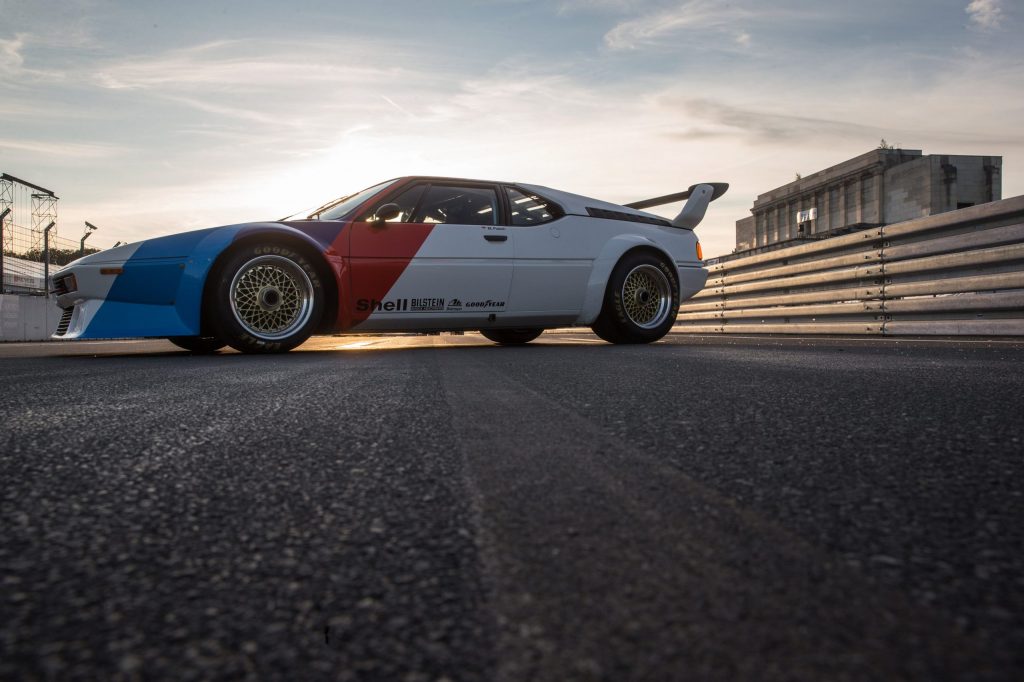
Both he and Surer would frequently point to their results in the M1 Procar Championship when negotiating contracts and fees. The combination of M1 Procar and Formula 1 races over a single weekend didn’t simply give the fans extra viewing time; it occasionally helped iron out disputes between the drivers and their F1 teams.
“I remember a really frustrating day with the ATS [car] at Brands Hatch,” Surer recalls. It was 1980, and Surer was driving a Cosworth-powered car campaigned by the German wheel company Auto Technisches Spezialzubehör, abbreviated ATS.
“The team was not happy with me and I was not happy with the car. But then I went to do qualifying in the Procar and got pole position. And for me, it was so important because they doubt you – ‘Maybe the driver is not as fit as we think’ or ‘What is the problem?’ – and you say ‘The car is shit.’ Then you go and you sit in a neutral car and you beat all these Formula 1 guys who are far away in front of you in F1 … It is a moment of redemption. When you come back to the F1 team you don’t need to discuss anything!”
For Jan Lammers, the M1 Procar Championship was a chance to show he was a race winner when not in mediocre equipment. “We had Alan Jones and Carlos Reutemann and Jacques Laffite take us on [in the Procar races],” he says with a twinkle in his eye, “and they were driving all those Formula 1 cars that we would love to drive. So as soon as we got them in our neighborhood, we went bam!” He slaps his hands together and laughs.
“Racing with Hans Stuck, I had great battles. He was always a tough guy. I was a tough guy. So we had lots of battles, but always fair and square.” However, even when he wasn’t having problems with other drivers around him, Lammers laughs about other issues he had to contend with in the M1 Procar series.
Once, he taped over all the ventilation ducts in the cabin in an attempt to eke out a fraction more speed from his car. It wasn’t a wise move. “Physically, the M1 was not too bad. It’s just hot. The engine is very close to you. So taping the vents shut meant the fire extinguisher went off,” Lammers says. “And it wasn’t one of those powder fire extinguishers – it was one that sucks the oxygen away. So immediately, I felt like I was completely drunk.” Lammers passed out briefly, luckily on the straight, then woke to find he’d dropped from first to fifth. “So then I regained consciousness and I made it almost back to win, but it was like … a half a car length. It’s a story for the grandchildren!”
To this day, M1 Procar remains one of motorsport’s greatest championships. For a series that came within a photo finish of never happening in the first place, its reputation endures, and the crowds still come to see the cars run. That’s quite some compliment to the men who dreamed up the idea over one stein of beer too many.
BMW M1 PROCAR SPECIFICATIONS
Total production: 46
Price when new: 150,000 DM
Engine: 3498-cc straight-six
Power: 470 hp @ 9000 rpm
Weight: 2248 pounds (1020 kg)
Power-to-weight: 4.78 pound/hp
Transmission: five-speed manual
Brakes front/rear: disc/disc
0–62 mph: 4.5 seconds
Top speed: 193 mph
Nürburgring Nordschleife lap time: 7:55.9 minutes (Marc Surer)

